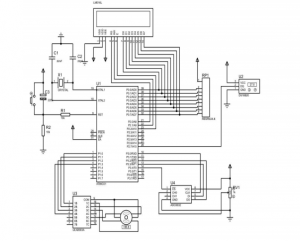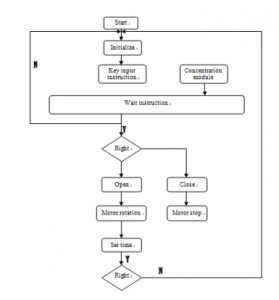One of the concerns presented by desktop 3D printing is the amount of potentially harmful particles that are produced by the process. In a paper entitled “An Intelligent Exhaust Gas Processing System for Desktop 3D Printer,” a group of researchers discuss how they developed a system to perform adsorption and catalysis for desktop 3D printers.
The system consists of a digital universal particle concentration sensor, a microcontroller, and a DC motor. The particle concentration sensor detects whether the concentration of particulates in the 3D printer exceeds the lowest critical value harmful to the human body.
“The concentration of the detected particulates is compared with the preset concentration limits by the circuit,” the researchers explain. “If the concentration exceeds the upper limit, the motor is turned on; if less than The lower limit, the motor is closed, if the user needs manual intervention and adjustment in special circumstances, can be manually controlled through an external switch to achieve air processor switch.”
 A temperature acquisition circuit module monitors in real time the internal temperature of the 3D printer. A display circuit module and a motor control circuit module are also included.
A temperature acquisition circuit module monitors in real time the internal temperature of the 3D printer. A display circuit module and a motor control circuit module are also included.
“The main task of the microcontroller microprocessor in this system is to complete the control and processing of the data collected by the particle concentration acquisition module and compare it with the preset standard value,” the researchers continue. “When the value is greater than the standard value, the control motor is turned on. The main program first completes the initialization, and then starts the particle concentration acquisition module and performs the corresponding output operation…System software flow is mainly divided into system initialization, data acquisition, data processing three parts.”
 For the exhaust of the 3D printer, the adsorption equilibrium constant is small, so it must be cooled before adsorption. After heating the desorption concentrated exhaust gas to a certain temperature, it catalyzes carbon dioxide and water, and discharges after cooling. The exhaust gas treatment equipment includes an adsorption-desorption device and a catalytic burner.
For the exhaust of the 3D printer, the adsorption equilibrium constant is small, so it must be cooled before adsorption. After heating the desorption concentrated exhaust gas to a certain temperature, it catalyzes carbon dioxide and water, and discharges after cooling. The exhaust gas treatment equipment includes an adsorption-desorption device and a catalytic burner.
Adsorption pad 3 is filled with a shaped adsorbent, and gas passes through to the adsorption zone for adsorption purification. A small amount of hot air blows through the desorption zone, the volatile organic compounds (VOCs) are forcibly desorbed, and the adsorbent is regenerated. The desorption of the adsorbent is cooled with a small amount of low-temperature airflow to ensure the effect of adsorption of the adsorption zone.
“The exhaust gas produced by the desktop 3D working process contains solid particles and harmful gases, which will cause some damage to the environment and people,” the researchers conclude. “Although it is suitable for FDM desktop 3D printers, this paper can also be used on other desktop 3D printers such as SLA and SLS, and develop an adsorption and catalytic combustion composite reactor based on 51 single-chip microcomputer based intelligent coupling adsorption desorption and catalytic combustion, which can realize 3D printing. The harmless treatment of exhaust gas fills the blank of 3D printing waste gas treatment, and greatly expands the application of desktop 3D printer.”
Authors of the paper include Ligang Cai, Shunlei Li, Qiang Cheng, Zhifeng Liu, Wei Cui and Huirong Fu.
Discuss this and other 3D printing topics at 3DPrintBoard.com or share your thoughts below.
Subscribe to Our Email Newsletter
Stay up-to-date on all the latest news from the 3D printing industry and receive information and offers from third party vendors.
You May Also Like
Gorilla Sports GE’s First 3D Printed Titanium Cast
How do you help a gorilla with a broken arm? Sounds like the start of a bad joke a zookeeper might tell, but it’s an actual dilemma recently faced by...
Nylon 3D Printed Parts Made More Functional with Coatings & Colors
Parts 3D printed from polyamide (PA, Nylon) 12 using powder bed fusion (PBF) are a mainstay in the additive manufacturing (AM) industry. While post-finishing processes have improved the porosity of...
$25M to Back Sintavia’s Largest Expansion of Metal 3D Printing Capacity Since 2019
Sintavia, the digital manufacturing company specializing in mission-critical parts for strategic sectors, announced a $25 million investment to increase its production capacity, the largest expansion to its operations since 2019....
Velo3D Initiates Public Offering in a Bid to Strengthen Financial Foundations and Drive Future Growth
Velo3D (NYSE: VLD) has been among a number of publicly traded 3D printing firms that have attempted to weather the current macroeconomic climate. After posting a challenging financial report for 2023,...
































